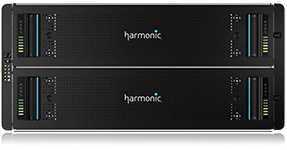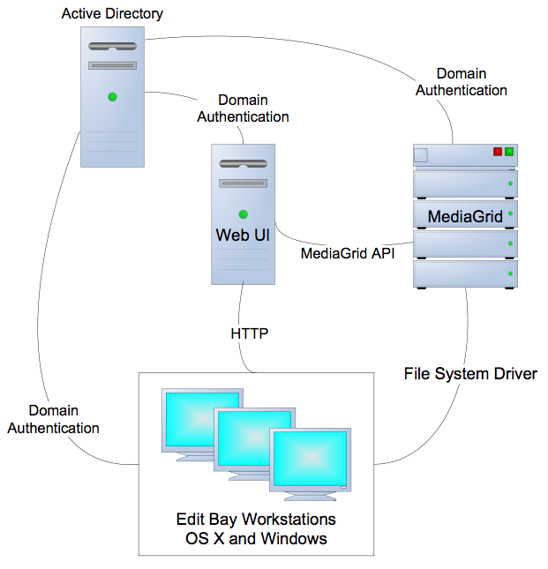Unknown Fortune 100 Company Turns to DigitalGlue for MediaGrid Upgrade
Upgrade allows Improved control of user access to shared storage system.
This is a Press Release edited by StorageNewsletter.com on August 2, 2016 at 5:41 pmDigitalGlue announced the completion of a Harmonic, Inc.‘s MediaGrid shared storage system upgrade that has enabled a Fortune 100 company to improve control of user access to its in-house video production files.
MediaGrid shared storage system
 The solution included custom software development to create an easy-to-use Web Interface integrated with an Active Directory Domain server to control folder and file permissions.
The solution included custom software development to create an easy-to-use Web Interface integrated with an Active Directory Domain server to control folder and file permissions.
“The company needed to move past an antiquated and complicated system that was allowing non-employees full access to all the folders on the MediaGrid’s shared storage and not syncing properly in the company’s diverse environment of Windows/OS X servers and workstations,” explained Tim Anderson, CEO, DigitalGlue. “DigitalGlue was able to design an easy-to-operate solution that limits file access to only those working on those particular projects, thus streamlining the process and adding another layer of security.”

The company knew that a move to an Active Directory solution was necessary, and it wanted the Content Management Solution (CMS) removed from the mix for this critical job. Firm’s design included a friendly Web Interface to automatically update Active Directory Domain credentials. Active Directory integrates with the MediaGrid API and sets ACLs (Access Control Limits) on the storage system.
Once the MediaGrid and the edit-bay workstations (Windows/OS X) were joined to the domain, leaving the old LDAP server behind, synchronization problems were solved. Domain groups were defined by read-only or read-write access. A third group grants admin rights to members who can further define limits, such as the number of projects an editor could check-out at one time, as well as the ability to revoke access to a project at any time.
The upgrade resulted in a simple Web page, where all the projects are displayed and active users are identified. Corporate client members (read-only) are now able to see which editors are working on their projects.
Editors (read-write) members are shown a list all of the projects with a simple click to change interface. The Web app limits projects available for check-out to only those that are not in use, thus avoiding any shared write-access issues. The Web app also limits the number of projects allowed to be checked out at once.
The Active Directory server as well as the Web server are hosted on VMs for a robust infrastructure environment.












 Subscribe to our free daily newsletter
Subscribe to our free daily newsletter
